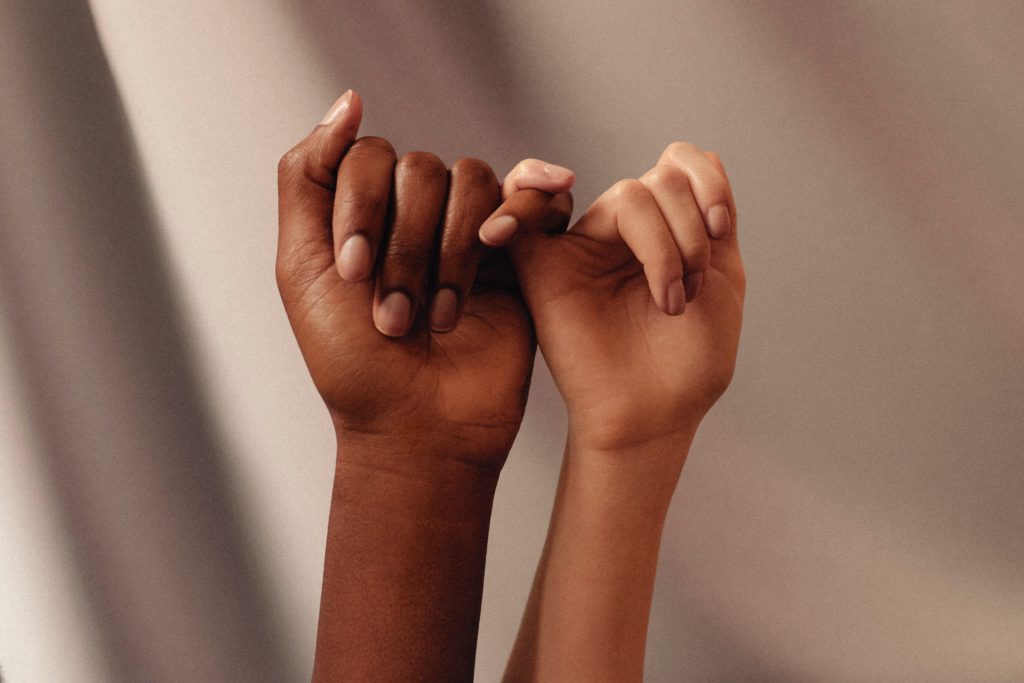Building Inclusive Brands

SHARE //
Building a brand is more than creating a service or products to sell to people. Today, consumers demand more from the brands they shop with and expect them to reflect their values, interact with them and in some way contribute to a better society.
One of the most scrutinised topics in the Marcomms industry has been how brands and marketers lack non-inclusive representations which influence and reinforce injustice in our society. The starting point is usually from a lack of internal diversity, which does not breed a culture of inclusive thinking. Inclusivity starts from within. It should be a consideration throughout creative processes rather than an afterthought or at the end.
To build an inclusive brand, we must first start by defining what inclusivity looks like:
An inclusive brand embraces different perspectives and people of diverse backgrounds to produce culturally rich storytelling and resonates with all types of people.
To help your business better champion diversity within marketing and communications, here are five things to consider.
Use inclusive language
Actions matter, but words do too.
Language is at the heart of communications and helps target audiences decipher if a brand is talking to them. Writing with a broad audience in mind helps create communications that resonate with different people. Things to be mindful of include:
- Refer to everyone with respect
- Don’t include stereotypical phrases or derogatory terms to refer to your consumers.
- Have multilingual employees in your team for more natural conversations when the need comes
- Be mindful of individuals with disabilities and impairments how your campaigns can ensure to reach them.

Maintain equality between your target market communities
Ensure equity and equality among all your consumers.
Maintaining balance among all your audience is essential. Make everyone feel equally important. For instance, you could launch products that cater to each consumer group in your target audience. It will also establish a deep connection between all communities.
Visual representation is another important consideration. Your community wants to see themselves in your brand and feel welcomed. Think about the type of people you have involved in your brand narratives and ensure they reflect a rich portrayal of communities.
Conduct thorough research
Build up the habit of researching and checking the facts thoroughly.
It is important to diligently research and understand the context of different communities, cultural celebrations, movements etc., before jumping on the bandwagon. Living in the age of information has both its ups and downs. While you can have many resources at hand, not all of them are reliable. Partnering with someone belonging to the groups you want to target is one of the best forms of research, as these individuals can lend their lived experience and authentic insight. Here are a few additional tips to keep in mind while you’re either researching new markets or cultural festivities.
- Refer to official organisations
- Look up information on websites ending with .org and .gov (websites belonging to organisations and the government)
- Cross-check social media facts with official and reliable resources
- Examine how people talk to each other
Wrong facts can be harmful to your brand image and the communities.
Provide your audience with a platform to share their experiences
Your brand isn’t just about you; it’s about others as well!
Community and conversation go hand in hand, and a key way to build community is by facilitating platforms that invite people to express themselves, feel heard, respected and listened to. Your audience is an extension of your brand’s storytelling. Their positive experiences amplify advocacy and brand love. They have stories to share regarding the issues they face, testimonials and they desire to connect with like-minded individuals in your community. As a brand, the best thing you can do is to give them the spotlight. You can help your consumers share their testimonials and life experiences using the following:
- Micro groups such as Facebook, slack, private Instagram’s
- Host live video sessions on Instagram for richer interaction
- Create online and offline networking opportunities.
Align your actions with your values
Follow the values of your brand, even when nobody’s watching!
Last but not least, integrity is a brand’s highest value. If you mean to make your brand inclusive, it has to be inside out. As a business, you should always employ people based on talent and skill. Never allow race, ethnicity, religion or culture to come in the way of hiring or even assigning top leadership roles in the hierarchy.
Conclusion
An inclusive brand strives to celebrate, involve, and represent all types of people internally and externally. Brands have equity and influence, what they say and do people pay attention to. Therefore, championing inclusive brand building sends a message of respect, tolerance, and unity to a brand’s community and internal employees, which help to influence a better society. Not only is this a nice thing to do, but it profoundly positively impacts business in terms of tapping into new markets and revenue streams, strengthening ideas, reducing oversights and creating dynamic respectful cultures.
About the Author

This article was written by Shannon Walker, the founder of Social Disruption. Shannon is a multi-disciplined communications specialist, who has worked with iconic businesses such as Liberty London, where she launched their Influencer Marketing department as well as luxury fragrance brands such as Cartier, Bvlgari, Jimmy Choo, Elie Saab, Alaïa and Issey Miyake.
To connect with Shannon, you can check out her Instagram and Twitter.
TIRED OF READING? WANT MORE OF A HUMAN TOUCH? I GOT YOU.